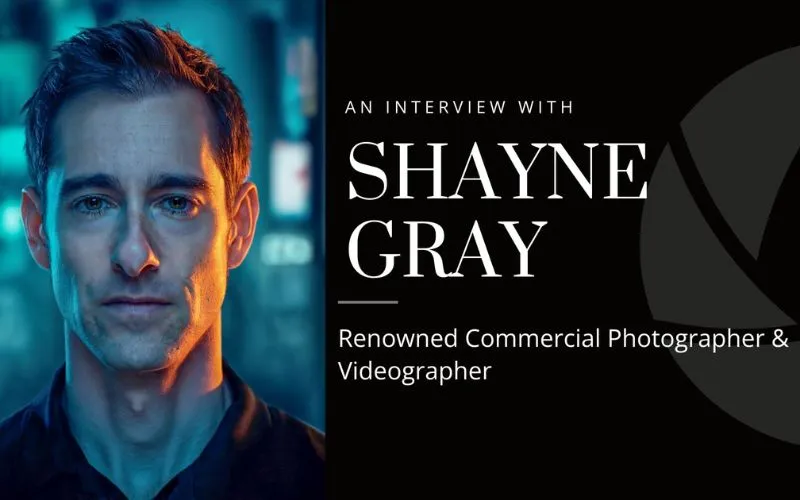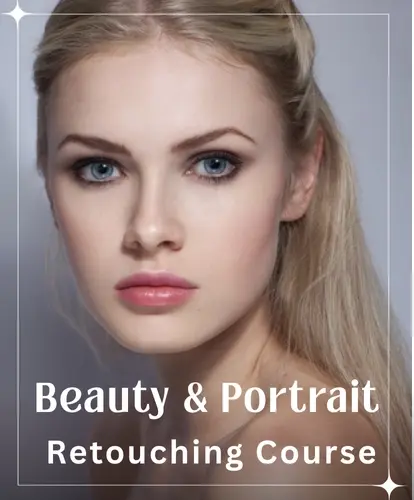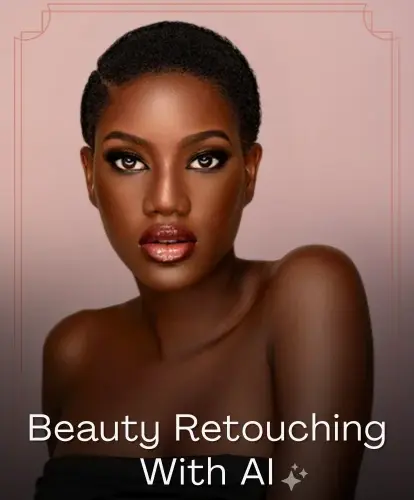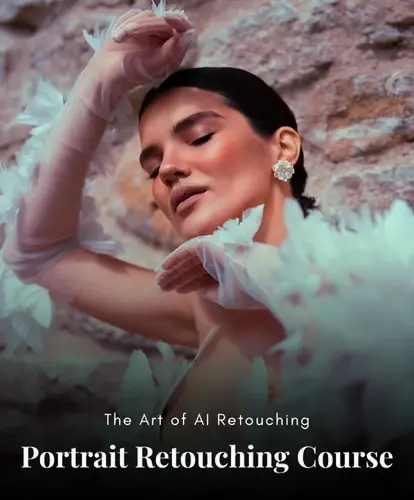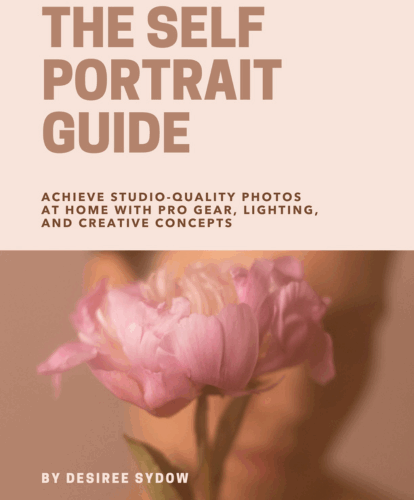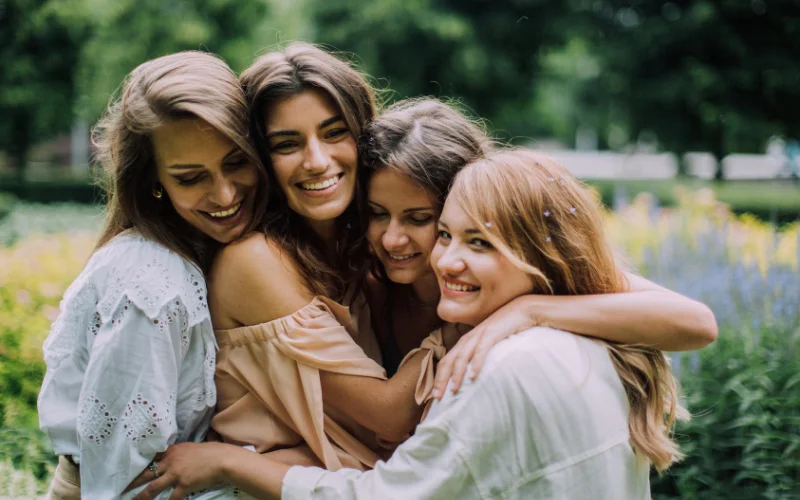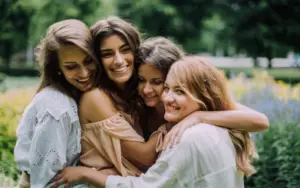In the ever-evolving world of commercial photography and videography, few artists have carved a path as dynamic as Shayne Gray. His work blends vision with versatility, pushing creative boundaries at every step.
He has photographed Billy Porter and Justin Trudeau. His photographs have appeared in GQ Brazil, Vogue Italia, and British Vogue. Each frame conveys impact, artistry, and honesty.
These days, Shayne effortlessly juggles film, fashion, and advertising. He talks candidly about taking chances, being creative, and what it takes to succeed in this interview.

Framing the Vision: Style, Story & Signature
1) You’ve been widely published in outlets like British Vogue, Vogue Italia, and GQ Brasil. What does it take, in your opinion, for an image to resonate with such top-tier publications?
A lot of things have to come together for a photo to end up in top tier-media outlets. There’s so much competition to get into those pages, but there are a few ways to do it. In my case it was a combination of things, but it mostly started in smaller more local publications, but then as I started to work on bigger projects, the scale changed and you hopefully level up and so to do the level of publications.
A big one for me was going to the bigger fashion shows and working really hard to get quality photos out fast. Always a tricky decision and honestly, I still don’t know the right answer, but you can either go to the after-parties and network or run home and edit until morning to make sure you make it in since photos are pretty much due while the model is still on the catwalk.
I just tried to work as hard as I could but honestly a lot of people in the media pit are getting a very similar shot so you have to force yourself to consider what’s going to set you apart. I had a really good system for super accurate color and getting them out fast and being right in the center of the media pit and establishing relationships really helped. At a certain point I could just send them out to PR agents or magazines directly instead of waiting for them to get picked up.
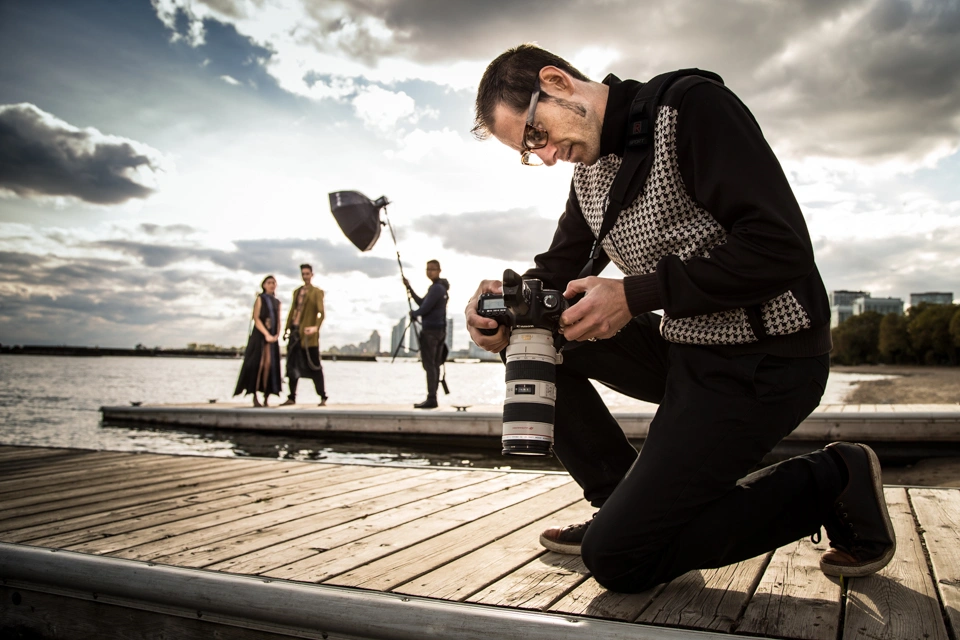
2) Your portfolio spans both photography and videography. How do you approach storytelling differently when working with stills versus motion?
This is a fun one because some moments work better at 1/200 of a second while others work better capturing its full movement in motion or in a sequence. It’s very different of course, but in a photo, you can imply motion in various ways: you can capture something frozen in time nice and crisp to see all the detail or imply that motion introducing some motion blur.
Sometimes one influences the other and we’re seeing trends change in video work where we often see these motion blur video sequences as well, which can be really impactful, but only for a very short time. Ultimately there are so many things that are the same. You still always want to take various crops to really tell whatever story and those “rules” have always been around since film making began, where you can establish an environment and your character(s) and then start to move in on the details like expression, clothing or whatever’s relevant to that shoot.
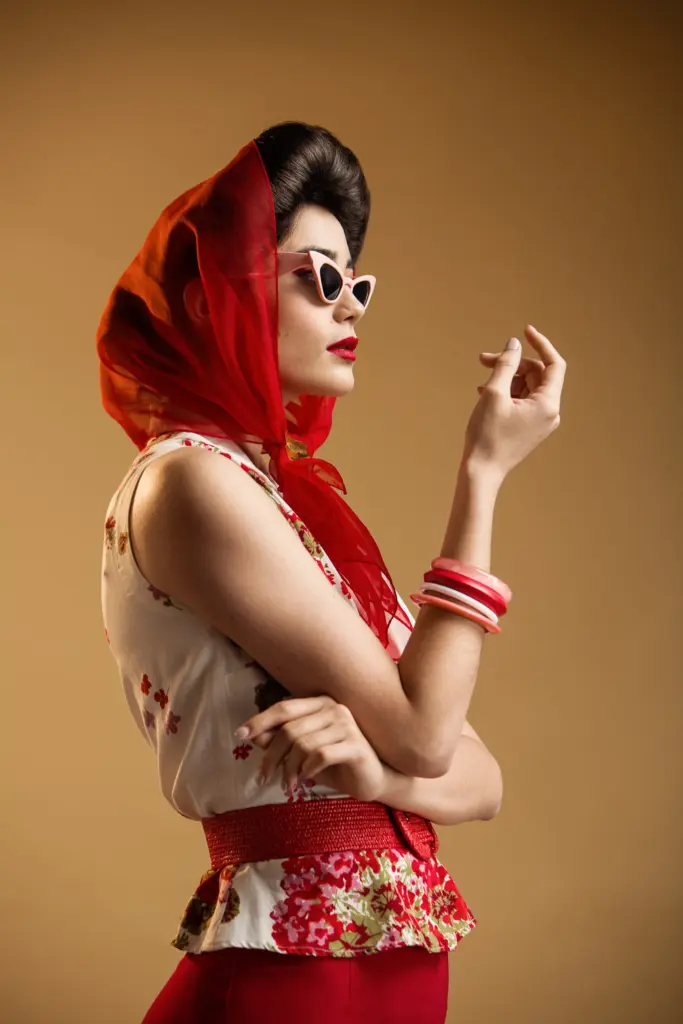
You might also like: All-In-1: Aerial Videography & Photography Course Bundle
3) How do you bring out the authentic side of celebrities and public figures?
Celebrities come in different types of course. Some are super used to being in front of the camera where others aren’t as natural even though they also get photographed a lot. It depends on what they’re famous for. Ultimately, you want great shots and they want to be made to look their best.
I read an interview one time with Gregory Heisler that stuck with me who did a shoot with Bruce Springsteen. A guy like that probably doesn’t even remember most of the shoots he’s done or who he’s done them with, but Heisler said he really got Springsteen’s attention when he pulled out a 4×5 analogue camera instead of a current Canon, Nikon, Sony or whatever almost all of us use. It’s a really slow process to use a big and old camera like that, but he definitely managed to hold Springsteen’s attention with it.
The lesson is of course NOT to bring a huge, clunky, and somewhat risky camera to every shoot, but again to do something different. I try to explain a concept we’re going for even if they’re not going to see it in camera right away as something that will be done in post or some kind of in camera effect. So just like with any other big brand I’m looking to get them excited to work together to try something and that comes back to preparing ideas well in advance of coming in.
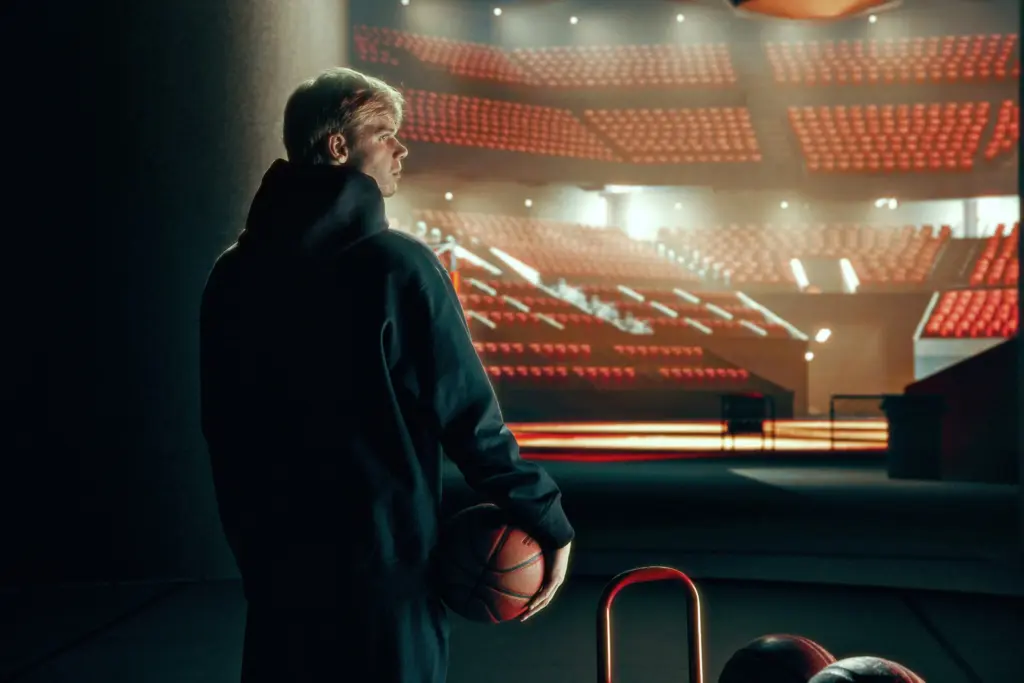
4) Many of your clients span industries from fashion to tech to lifestyle. How do you ensure your visual language remains consistent while adapting to such different sectors?
I’m in a really fortunate position in the meantime where many clients come to me for a specific editing style so that makes it easier. As I mentioned before, sometimes I can help to move the conversation to new possibilities or creative aspects I think may contribute to a more dynamic finished product. It’s often interesting to me that of course it’s always different but somehow often the same. It keeps it interesting to continuously learn and try new things, but it’s also an ever-evolving thing and it’s almost impossible not to create something with your own spin on it because there are just so many micro decisions we’re constantly making that shape that final output.
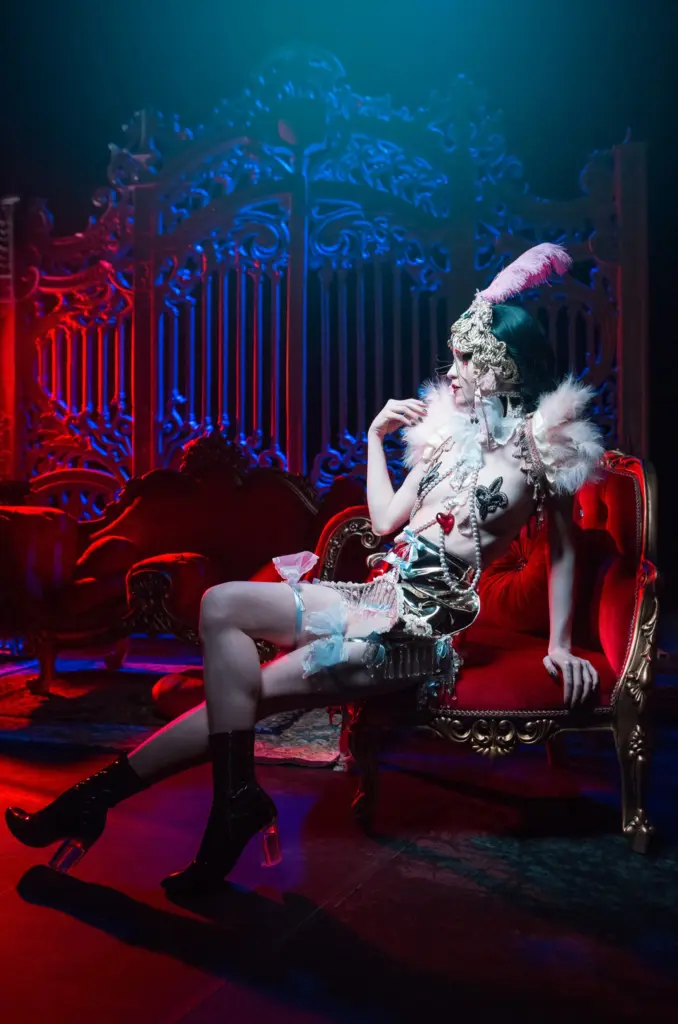
5) What’s one personal mindset or habit that you believe has been key to your success as both an artist and professional?
Do things most people won’t. In the “early” days I got myself some lights. It’s definitely more effort to take a larger setup outside or somewhere else and it’s easier not to as a photographer starting off. It’s not like people don’t do it of course, but you sometimes need to ask others for help, which can be tricky in itself.
If you’re going to a unique location or even somewhere with a gaggle of other photographers all photographing the same thing, they’re all going to get a really similar shot. Again, in the spirit of trying to get something most people won’t, I think it’s important to challenge myself in those ways. That applies to taking a model outside for example or in my case going to fashion shows, there were so many photographers all taking the same shot. I tried to take the effort to actually light something I knew no one else would and for good reason – there’s a lot going on at a fashion show and you don’t want to get in the way or be too bogged down with gear so it can be a delicate balance.
These days where we’re doing bigger shoots so of course we’re going to take whatever on the road or to whatever location, but we still just always ask ourselves, “how can we elevate this” and I have to say, my business partner and one of my closest friends Nick Merzetti and I always push each other to always push harder, which is super healthy and we’ve learned a lot from doing that.
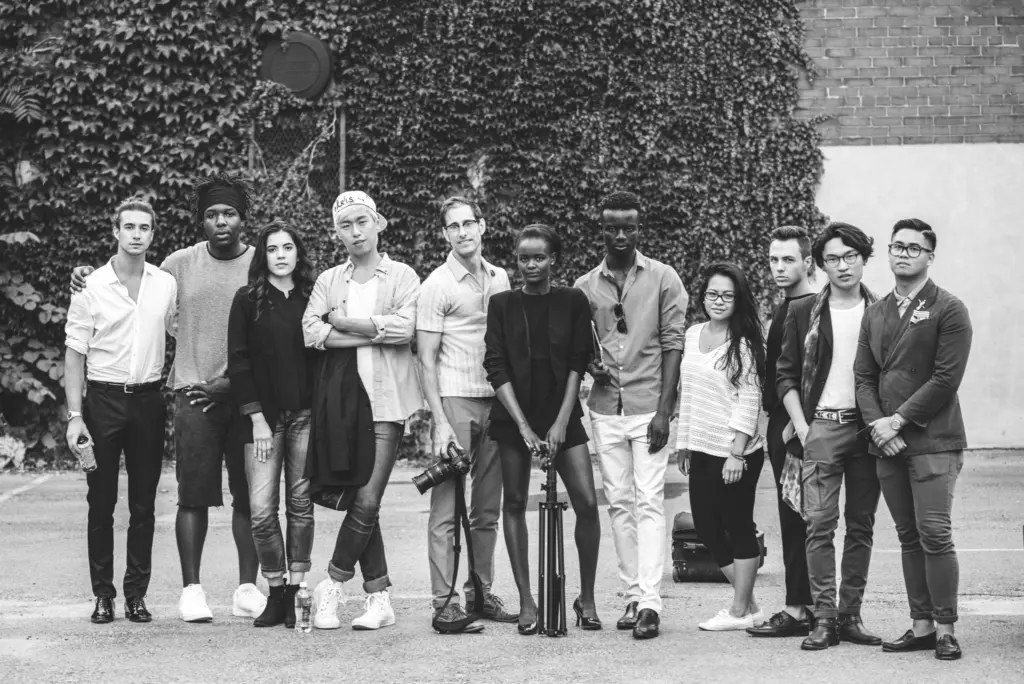
Spotlight & Stardom: Celebrities, Brands & Bold Campaigns
6) You’ve shot everyone from celebrities like Stewart Copeland to Canadian Prime Minister Justin Trudeau. How do you prepare for such high-profile shoots?
One of by biggest lessons I learned the hard way was not to play it too safe. I did that early on with someone fairly high profile and was very excited but in the end I wound up with extremely ordinary photos. From there I always challenged myself to try and think up something push myself and my skills or to experiment and take chances more. You can (and probably should) check off the safe shots, but leave room to take a risk because it’s likely to turn into something great.
If a photo is too ordinary then great, you have a personality in your portfolio that people will recognize, but what’s the fun in that?! I’ve been lucky – I feel like the shoots I’ve had with big people like Billy Porter for example or Toronto Raptors star basketball player Gradey Dick, I got to spend a day with them where sometimes you only get a few minutes.
There’s a lot of researching that person in advance. You don’t want to repeat something too similarly they’ve already done with someone else or do something with them that’s not authentic or natural to them. Mixing that research with taking time to actively ideate helps to settle nerves and prepare. Also I have a folder on my computer where I collect inspo and also keep an email thread with creative ideas to draw on when something occurs to me, but I also save things on IG or pinterest where so many people out there really are creating such amazing work.

7) From Levi’s to Google and IKEA, you’ve worked with diverse global brands. How do you adapt your creative approach to align with different brand identities?
Adapting is part of it but that comes from both sides. For those types of bigger commercial shoots there’s generally a lot of pre-production and it’s a time to get to know each other and see if we share the vision. Often people or agencies are have an idea so it’s a matter of sculpting that to discuss how we’re going to do that and what’s it’s going to look like in the end, but I can also make suggestions or try to veer a client in a different direction if I think it will work.
We actually just had a shoot for Hugo Boss a few days ago, where they showed us a motion example as inspo and we ended up suggesting a complete overhaul that ended up being a lot more experimental. Sometimes that’s just a matter of getting everyone excited and on board to how we’re going to adapt an idea to their brand.
Similarly to what I was saying above, I have a shot list of safe shots just in case the experimental stuff doesn’t work out for whatever reason, but in the end we’re all on the same team and I want a portfolio piece especially with a big brand and they want the best, most engaging work for their channels as well so we do everything we can to meet that common goal. In the end it’s always a collaboration. I want to realize their vision, but I also want to at least try to put my own unique finger print on it.
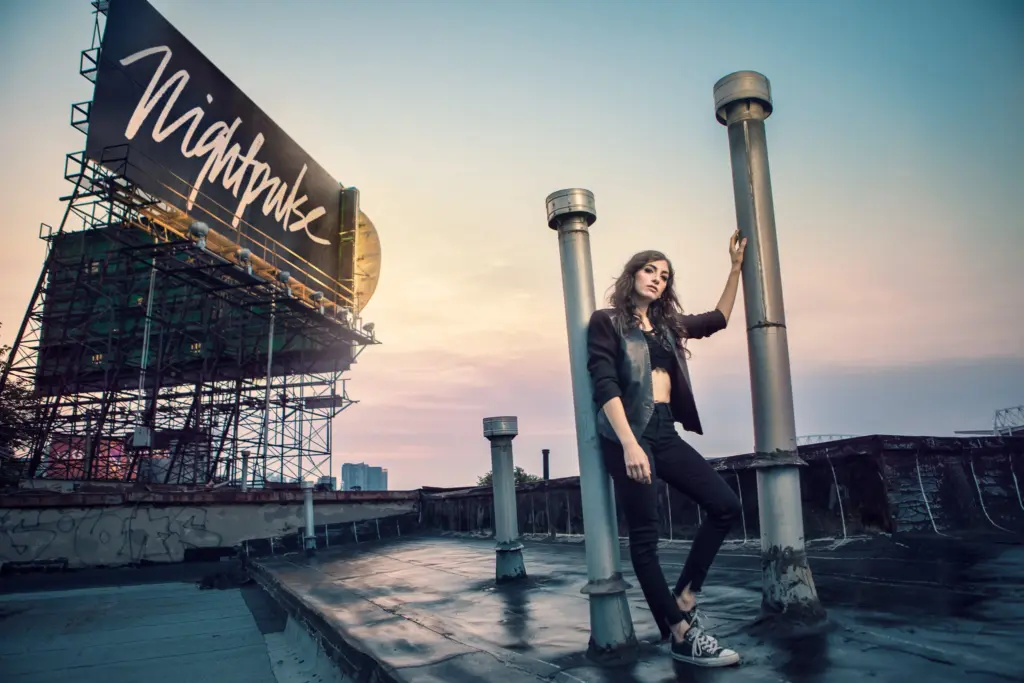
8) As a SNAP! Award winner, what did that recognition mean for you at that stage in your career?
SNAP! was great! At the time I was shooting more conceptual content that was more surreal as compositions created with some heavy photoshop compositing, but then it turned into more commercial and fashion work that wouldn’t really be displayed in a gallery setting so I still hold that stage of my evolution in a very special place and maybe I’ll go back to creating that type of work one day. We’ll see!
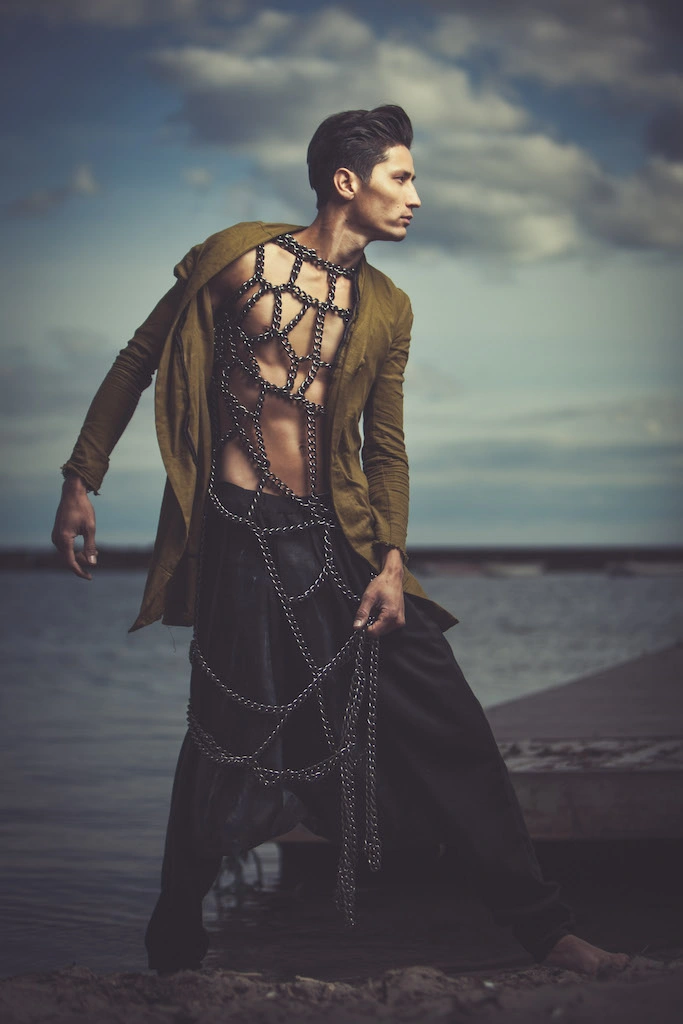
9) Looking at your journey so far, what project or campaign are you most proud of, and why?
I’m happy to say there are so many I’ve been really proud of. The most ridiculous thing I’ve ever created turned 10 this year, which was a Movember campaign we did that definitely ruffled some feathers at the time. I was slightly apprehensive to put it out there and it did cross my mind that brands may not want to associate themselves with material like that, but in the end it gained a lot of traction and the community engagement was fantastic. Some people loved it/some hated it, but that’s exactly what I was going for. I’ll let anyone look it up for themselves (or not) but it was called “Double Moustache” which was basically one dude/two moustaches.
In more modern times I think some of the work I’ve been doing with Fashion Canada has been work that’s helped me go further in my career like the soccer super star Jonathan David video we did and the Arcadia Earth collaboration with Value Village where our amazing stylist Sarah Jay pulled some surprising looks that were so good!
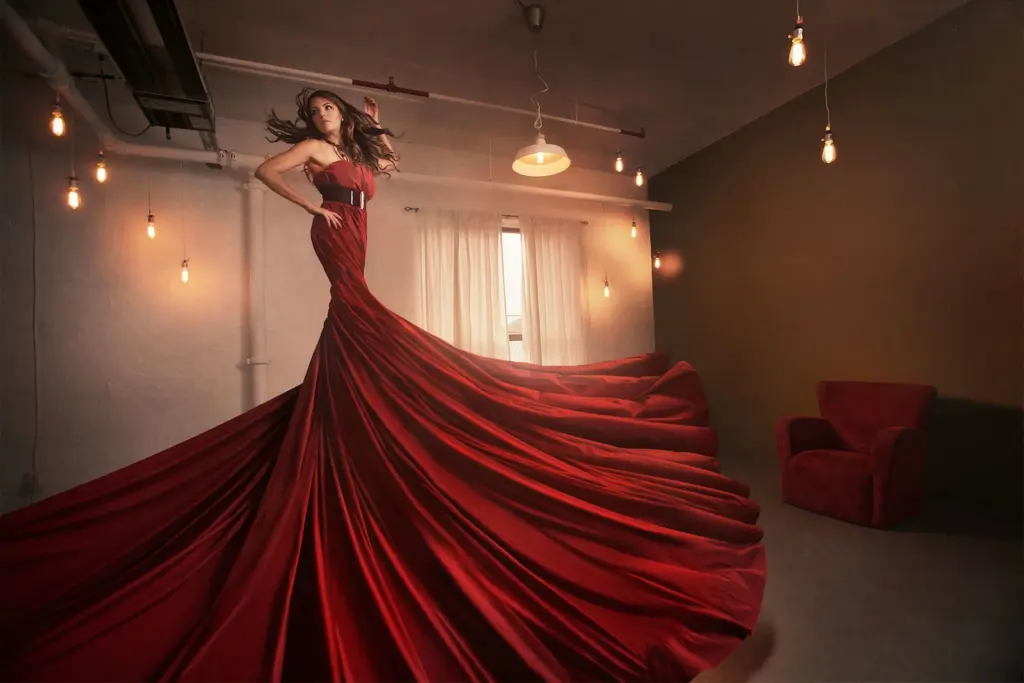
10) You’ve worked with icons, politicians, and big brands. Is there still a dream client or subject you’d love to shoot?
There are soooooo many!! We’d love to shoot for V Magazine among others, but even locally I think we could do something really gritty and fun for Vitaly or something super rock ‘n roll for their other brand Clocks and Colours. I haven’t approached them but if they’re listening…. Beyond that, big brands like Nike would be great of course and although we shot for Redbull Records to do a music video, I’d love to get in on the creativity and immense talent that Redbull puts together for some of their other shoots.

Beyond the Camera: Growth, Teaching & Inspiration
11) How has international experience shaped your perspective as a photographer?
I lived in Europe for a while both in Cologne and Madrid, but I’ve also had the opportunity to travel quite a bit both for work and pleasure, but honestly, yes it’s great to go out in the world and learn from it but I also feel like I’ve learned so much from other photographers all over the world sharing their own unique perspectives and cultures and ways of honouring people, customs, food, and so many other things that go into the human experience and creating beauty.
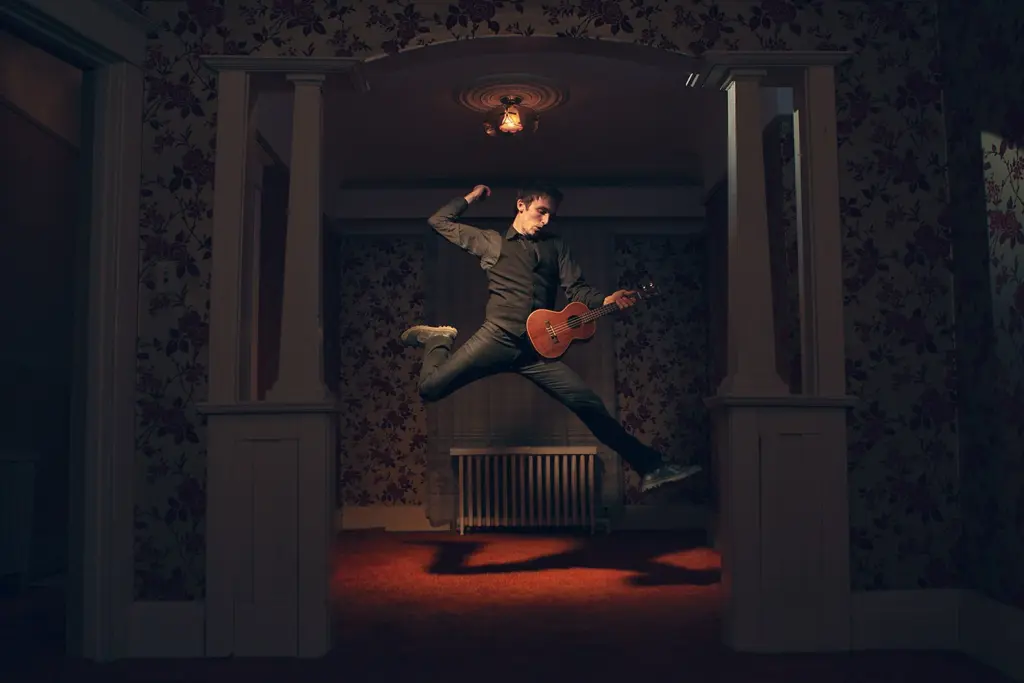
12) You’ve also been a CreativeLive, SLR Lounge, and Retouching Academy educator. What’s one key lesson you emphasize when teaching lighting and photography to aspiring creatives?
It depends what level I’m teaching to, but one main lesson I guess if I had to choose just one is that it doesn’t have to be complicated. We’ve seen light hit everything all our lives even if we haven’t paid close attention to it. Just to be extremely reductive, sometimes it’s as simple as putting more light where it’s too dark or knowing when to take lights away. In the end the light has to match a mood you’re going for. Smiley lifestyle photos for example obviously pair well with a bright and airy look whereas something with mystery or a certain stoicism pairs well with more of a dark and moody lighting setup.
Like any skill it’s about putting tools in your toolbox as you learn and grow and then applying a setup or some kind of variation to future shoots to get the effect and mood you’re going for. From there each light should be intentional. Maybe it can add a colour or separate a subject from a background or even just adding a small simple detail like a catchlight in the eye. Cinema is a great resource for watching how great filmmakers use lighting to elicit a very specific emotional response.
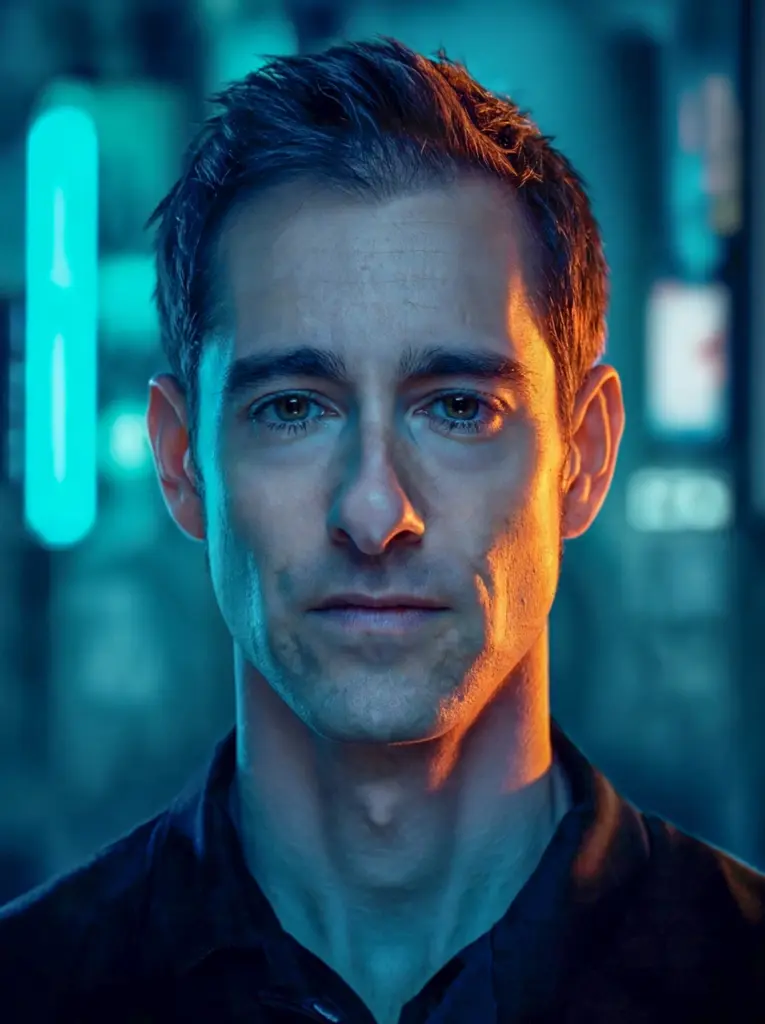
You might also like: Masterclass: Easy Yet Powerful Studio Lighting Tutorial By Frank Doorhof
13) Sitting on the Board of Directors at Gallery 44, you’ve had a role beyond image-making. How has being involved in the arts community influenced your creative practice?
I’m not sure it directly impacted the way I shoot but was a great experience and getting involved in the community is a great way to expose yourself to different ways of creating especially in my case of being on the board to a really good gallery. A gallery is generally involved in fine art, which can cross various forms of expression from political messaging, societal commentary, and so much more, but there are also valuable business insights involved specifically to running a gallery, and it’s a great networking vehicle.
I also found that I went to shows a lot more often in those days, which definitely provided another inspirational source. Gallery44 in particular also has a lot of equipment the community can use as well so that was also a great help in those days and having more immediate access to more expensive medium format gear for example meant the barrier to entry was much lower.
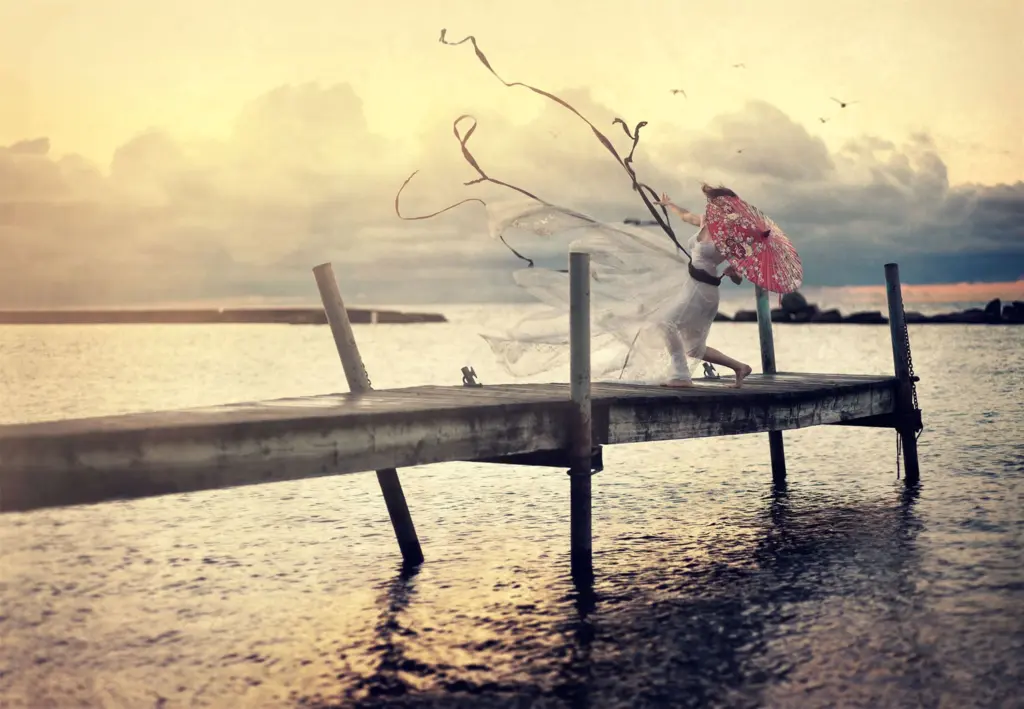
14) What personally drives your passion to keep exploring new opportunities?
Just when you think you’re on the right track and people are hiring you for some aspect of your work, there’s a huge wall of talented creators coming up behind you keeping you accountable and under pressure, which is great for the industry and for me personally. It forces me to innovate and not be stagnant or lazy. Also others around me in my immediate vicinity push me and we try to do creatives wherever possible as well just to try new things without a client telling us where the box is.
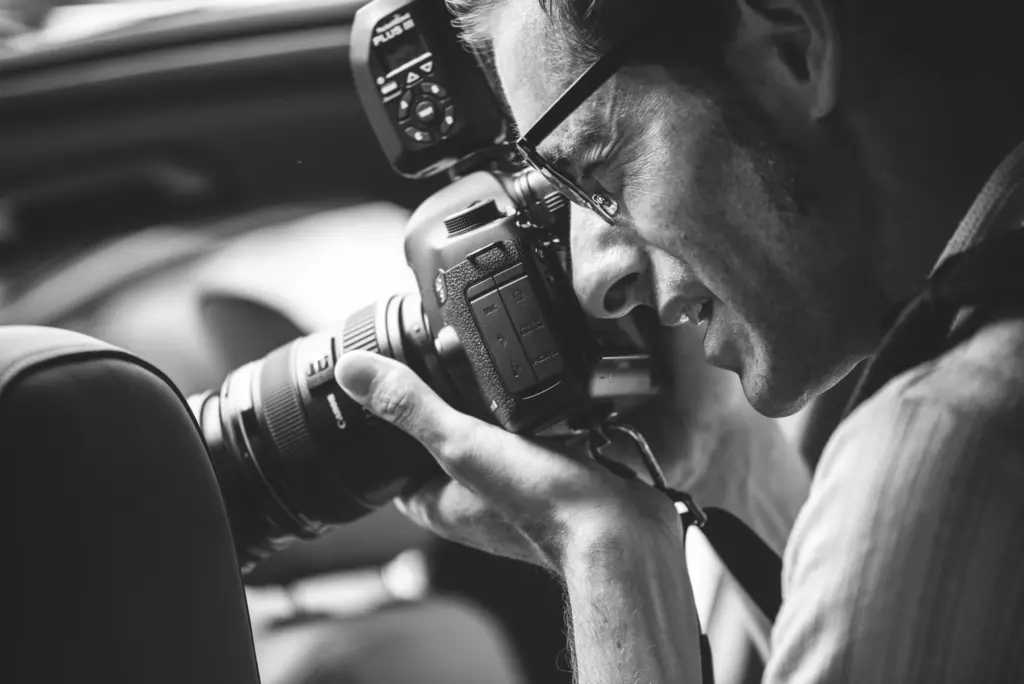
15) Lastly, which PhotoWhoa resources do you think can best help photographers take their craft to the next level?
PhotoWhoa is a great platform with ton of content, helpful tools and resources, and how to use them and level up. Speaking of CreativeLive, Jen Rozenbaum is on there whose workshop I took years ago as an established expert among many others. There are overlays, tools, plugins, and so much more, but I love that PhotoWhoa also has some really current content including how to leverage AI. It’s a controversial topic at the moment, but it’s also not going away so learning how to stay in the game and use new emerging technologies to our advantage is super valuable!

Closing Shot
From his early experiments with light to his rise as a world-renowned photographer and videographer, Shayne’s journey is all about pushing creative limits.
He proves that great storytelling, whether in fashion, commercial photography, or videography, depends as much on vision as on technique. For aspiring creatives, his risk-taking, project-driven energy, and openness to new tools like AI offer a path to follow. His story shows that success in photography comes down to creativity, determination, and passion.
To check out more of Shayne’s work: Website | Instagram | Facebook
